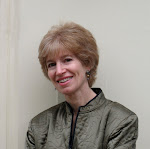So, what of this early 19th-century magazine, the Companion? This much we know: It was founded in Baltimore towards the end of 1804 and continued to publish until October 1806--a fairly long run for a "literary miscellany" of the time (the Companion's full title was The Companion and Weekly Miscellany). Apparently these journals would often spring up and then vanish a few weeks or months later.
In 1811 another Baltimore publication attested to the genre's generally short lifespan: "In the City of Baltimore so many abortive attempts have been made to establish a Literary Miscellany, that Experiment and Disappointment have become synonymous terms." The author even mentioned the Companion by name, despite its relative success: "The weekly visits of the Companion were scarcely greeted by a civil salutation," the author lamented. (This was part of a series of puns on the names of various defunct publications: "the rays of Moonshine were speedily extinguished: no one could see through the Spectacles," etc.)
Just as 18th- and 19th-century newspapers bear little resemblance to what we now call a newspaper (their front pages were usually entirely taken up with ads, they freely mingled opinion and reportage, and their "news" was often weeks old), these magazines were rather different from their modern counterparts. For one thing, the "profession" of journalism hadn't really been invented yet. The editors and contributors were all unpaid amateurs, often pressed for time--which may explain the brief life of many of the publications. Many of the writers in a given city actually knew one another--which enabled them to see past the pseudonyms, a convention originally adopted because a gentleman wasn't supposed to be engaging in this sort of activity. A typical issue might include a column or two, often written in a humorous vein, an essay on a historical or philosophical topic, a poem, a review of a concert or an art exhibit, and perhaps a smattering of stale news from Europe. And the pages of these magazines reveal a number of lively ongoing dialogues: one issue might well contain a vigorous response to an article published in the same magazine the week before, or to something that had appeared in another local publication.
In some ways, though, these magazines seem strikingly modern. Think about it: a community of individuals, many of them more or less protected by pseudonyms, often engaging in heated written argument in a public venue--sometimes, indeed, "flaming" each other. Remind you of anything? Yes, the internet. And the give-and-take nature of these publications, with many readers doubling as contributors (or leaving "comments"), is reminiscent of an early version of a blog (not to mention the fact that the writers weren't actually getting paid--just like most bloggers). Of course, people weren't only using these magazines to argue with each other. Like the internet, the publications also fostered a sense of community among their readers. (My neighborhood listserv is an amazing example of this. Neighbors who may never have actually spoken to each other are constantly trading household tips, finding each others' lost pets, and arranging to shovel sidewalks for the elderly.)
It's hard to say who the first editors of the Companion were. The pseudonyms they used--Edward Easy, Nathan Scruple, etc.--generally obscured even more than their real names: they came with entire fictional personae. "Edward Easy," for example, was supposed to be an elderly Quaker gentleman from Pennsylvania, with a backstory too complicated to go into here. But it's clear from later issues of the Companion (whose motto was "A safe companion and an easy friend") that those who were involved were all fairly young. In one issue, after the magazine had gone through several editors and suffered some publication difficulties, the editor of the moment pleads with readers to attribute any mistakes to the editors' "youth and inexperience."
My best guess is that the founders were a group of young men who were students at, or possibly recent graduates of, St. Mary's College, an institution founded by French Catholic priests in Baltimore in 1791. (It still exists as a seminary--and in the 20th century produced the famously anti-war Berrigan brothers--but in its early days it provided a secular education as well.) Similar "circles" of young men in other cities sometimes produced publications as an outgrowth of their discussions of books, philosophy, and current events.
There may have been a few women involved as contributors--some of the articles carry female pseudonyms like "Flavia" and "Biddy Fidget." But when an editor is referred to, the pronoun is always "he."
Until the issue of October 4, 1806, that is. That issue carries an editorial ringing the familiar theme of apology for a dearth of lively material. Note, however, the pronouns used:
… But when it is considered that the entire arrangement of the Companion depends on one alone, and whether the editor is grave or gay, whether visions of hope and pleasure play before her imagination, or she is sunk into despondence and beset with a whole legion of blue devils, the printer, like her evil genius, still pursues her at the stated period, and the selections must be made, and the proofs corrected, and of consequence, “The Safe Companion and Easy Friend,” must sometimes as well as safe and easy be sad and soporific ...
Yes: not "him" and "he," but "her" and "she." Thus it was announced, without any particular fanfare, that the new (or perhaps not so new) editor of the Companion was a woman--quite possibly the first woman to edit a magazine in the United States.
How would Baltimore react to this anomaly?
Subscribe to:
Post Comments (Atom)





No comments:
Post a Comment